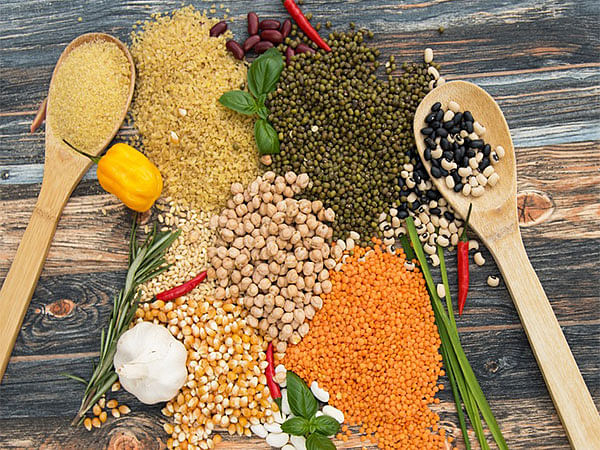New Delhi [India], October 8 (ANI): Prices of tur and urad in major mandis had declined, on an average, by almost 10 per cent over the past three months, informed Nidhi Khare, Secretary, Department of Consumer Affairs.
Secretary Khare, at the same time, noted that retail prices of these pulses have not seen a similar decline.
In the case of chana, the decline in mandi prices has been observed in the past month, but retail prices continue to increase.
Khare chaired a meeting with the Retailers Association of India (RAI) and major organized retail chains today and discussed the scenario and trends in prices of major pulses, amidst the festival season when consumption of pulses in snacks making tends to increase.
“Mandi prices of most pulses are on a declining trend in recent months against improved availability and higher sown area of kharif pulses this year,” the department said.
Further, the Secretary pointed out that the diverging trends between wholesale mandi prices and retail prices are indicative of increasingly unwarranted margins that retailers are extracting out of the market.
“The trends are being closely tracked and necessary measures will have to be initiated if the divergences are found to be widening,” the department said.
On the availability of pulses, the Secretary informed that Kharif Urad and Moong have started arriving in the markets while imports of Tur and Urad from East African countries and Myanmar are arriving steadily to augment the domestic production.
She also pointed out that this year, the sowing area for Kharif pulses has exceeded last year’s by over 7 per cent, and crop condition has been good.
India’s growing demand for protein-rich diets has led to an increase in pulse consumption, but the country still relies heavily on imports to meet its domestic requirements.
Despite being a significant producer of pulses, India’s production has not kept pace with demand, leading to a rise in imports. The imports are done from Myanmar, Australia, Russia, Canada, and besides from some African countries.
India primarily consumes chana, masur, urad, kabuli chana, and tur. Among the pulses basket, tur, urad, and masur have a production deficit. (ANI)
This report is auto-generated from ANI news service. ThePrint holds no responsibility for its content.






